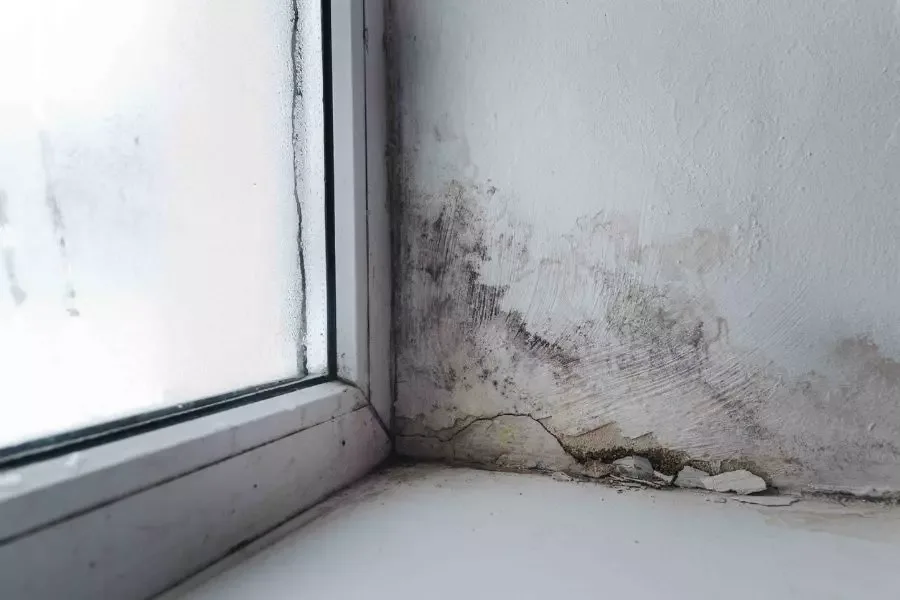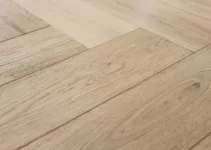The charm, character and sense of history that an old house brings can’t be overstated. Unfortunately, neither can the smell some of these ancient dwellings seem to carry with them.
Old houses are notorious for hanging on to unpleasant odours and strange, musty scents, even if there’s no immediately obvious cause.
This can cause a real headache, sometimes literally, for homeowners looking to entertain guests, sell up, or just live comfortably in a space of their own.
Today we’ll be exploring some of the most common reasons that old houses can carry a stubborn ‘old house’ smell, as well as steps you can take to identify, eliminate, and prevent unwanted odour.
Why does my house have an old house smell?
Before you reach for the bleach and scrubbing brush, it’s worth taking some time to try and work out what’s causing that smell.
‘Old house smell’ is a broad phrase used to describe a vague, musty odour that’s usually caused by various forms of mould, something we’ll cover in more detail shortly.
However, there can be a number of other causes of unusual or unpleasant smells not necessarily linked to damp conditions or fungus. Have you considered some of the following?
Previous owners
If you’ve just moved in, the unfamiliar scent of a previous family can linger for a little while. This can be due to a mixture of different bodies, different cleaning products, and different detergents used to wash clothes.
This isn’t necessarily anything to worry about – if there’s nothing causing the smell to linger other than residual scents, then the place will soon start smelling like you after you’ve lived there for a short while!
That being said, there are a few things that previous owners may have left behind which could take a little longer to clear out.
Tobacco smoke is a major one. It’s notorious for embedding itself into fabrics and even surfaces such as wallpaper and wood.
If airing the place out doesn’t get rid of old cigarette smells, you may need to look into having your upholstery professionally cleaned or replaced. Wallpaper might also need to be stripped and redone.
Pets are another factor to consider. Did the previous owners have a couple of big shaggy dogs? That damp fur smell can transfer onto porous surfaces and floors quite easily.
Like cigarette smoke, a deep clean might be needed to shift it.
Rodents or dead animals
Rodents and other wildlife love old houses as much as we do. Older structures often leave more nooks and crannies for mice, rats, and other critters to enter through as well.
If your house has a rodent problem, droppings, nests, and other by-products of rodent life can all contribute to unwanted odours.
If you see any of these signs, you may want to consider setting out traps or getting in pest control if you think the problem is severe.
If the smell you’re noticing is nasty rather than merely unpleasant, you might even have a dead animal decaying in the vicinity.
Rats and mice have an unfortunate habit of dying in wall spaces and hard-to-reach areas, leaving you with a horrible smell that’s difficult to shift and difficult to pinpoint.
Don’t panic – if you can’t get to the source of the stench, it will eventually decompose beyond the point of emitting odours, though this could take a few weeks.
Not ideal, but at least it presents a temporary rather than chronic problem!
Why do old houses smell musty?
Now we’ve covered some common but relatively easy to identify odours, let’s turn to the most widely experienced of ‘old house smells’.
A pervasive mustiness is a frequent part of an old house’s atmosphere and is most commonly caused by mould, and MVOCs to be more specific.
MVOC stands for ‘Microbial Volatile Organic Compounds’. The word sounds fancy and scientific, but from a homeowner perspective all you really need to know is that these refer to molecules released by fungal moulds that our human noses can sense.
Mould thrives in damp, dark, poorly ventilated spaces, all conditions which old houses are expert at providing.

Victorian house smells musty
The longer a house has been standing, the longer mould and fungus have had a chance to multiply and dig in.
What’s more, Victorian homes and other old structures tend to leave far more openings for damp, are less well insulated than modern builds and, due to their age, are more liable to be peppered with leaks, draughts, and poor ventilation.
Some of these issues can be difficult or expensive to rectify. Proper insulation, leaks and holes, repairing old pipework – these aren’t necessarily quick fixes.
That being said, there’s plenty that you can do yourself to start remedying some of that musty odour and bring some freshness into your old home.
Can you ever get rid of an old house smell?
Don’t despair! Although pervasive old house smells can be dispiriting, there are a whole host of remedies, many of which are accessible and inexpensive, that can help you shift even stubborn odours.
To eradicate an old house smell completely you need to target and fix the specific cause, as well as alter the conditions of the home sufficiently to prevent the cause of the odour from resurfacing.
That usually means ensuring that leaks are fixed and that ventilation is improved to the point that dampness is kept at bay.
How do you get rid of an old house smell?
When it comes to targeting and eradicating the source of the smell, there are a number of approaches depending on the cause.
Remove mould
If mould is the main culprit, as it often is when it comes to a musty smell, then removing that mould from all possible surfaces has to be one primary course of action.
Homeowners can tackle mould themselves using either home-made solutions or store-bought chemical cleaners, but be careful.
Certain moulds, particularly if they have formed extensively, can produce toxins that can prove harmful to humans if breathed in excessively.
Even if they don’t prove highly dangerous, exposure to fungal spores can exacerbate pre-existing conditions such as allergies or asthma.
If you think your mould problem is too big to tackle safely, consider getting in a professional cleaning service to remove it for you.
This could also be necessary if you discover that mould has taken root in places that are hard for you to reach on your own, such as attic spaces, wall cavities, or basement areas.
If you do want to take a DIY approach, make sure all pets, children, and vulnerable adults are safely out of the house or away from any areas in which mould has concentrated before you start cleaning.
Be sure to wear gloves and a high-quality face mask specifically designed for house renovation and other potentially hazardous tasks. It’s also a good idea to wear protective eye goggles.
Dehumidify
Once you’ve managed to remove mould from the building, you need to try to ensure it doesn’t return. Mould and damp go hand in hand – if you want to eradicate the former, you’ve got to sort out the latter.
Dehumidifying a house can be as straightforward as improving the ventilation by opening up windows and doors, or it can involve getting actual dehumidifiers in to sap excess moisture from the air.
Focus on areas that get little natural light or that are closed off. Bathrooms and other areas where there are sinks and taps are also more likely to be moisture traps, so try to ensure you’re leaving plenty of openings for steam and water to escape when these areas are in use.
Keeping your home well heated, particularly during the winter months, is also important when it comes to fighting unwanted condensation and moisture.
Clean or replace fabrics and furniture
Mould and dust can also find its way into soft fabrics and furnishings, so you might find that the musty, damp odour of your home is coming from furniture rather than the walls and cupboards.
If that’s the case, a deep clean and plenty of ventilation should be enough to solve most issues.
Carpet cleaners can be bought over the counter or, if you think the house needs an intensive clean, professional cleaners with professional tools can be brought in to tackle the job.
If your house is prone to damp and it’s difficult to combat, you may find that stripping out soft floors such as carpets, and swapping out fabric curtains for plastic blinds is a good way to help keep moisture at bay.
Hard wood or tiled floors are less likely to hold onto odours than their softer, more porous cousins.
Clean walls and repaint
Making sure that hard surfaces in the home are kept clean can be just as important as keeping the fabrics washed when it comes to combatting an old house smell.
If you’re planning to renovate and repaint, be sure to scrub down the walls first, before covering them with a mould-resistant paint primer.
Old wallpaper might also need removing if you find it’s emitting a bit of an old, mouldy smell.
Clear your drains
If you’re carrying out an extensive clean of the house, it’s always worth taking a few extra minutes to clear your drains, particularly in older properties.
Blocked or partially clogged drains can create lingering, unpleasant orders that drift up through your pipework.
You may find that you don’t notice the smell until you’ve left the house for a short while and re-entered, as drain odours have a habit of creeping in gradually.
Over the counter sink unblockers and drain cleaners can be a cheap, effective way to keep your pipes clean. There are also a whole host of home remedies you can try, including vinegar and baking soda.
How do you freshen up a stale house smell?
Deep cleaning your property can take time, as can turning your home into a dry, airy, and mould-resistant space. So how can you freshen up a stale house in the short-term?
What if you have guests coming over imminently and you just can’t seem to get rid of that strange, lingering smell?
Open windows and doors
It sounds obvious, but the more air currents you can get moving around the house the more effectively odours and scents can be carried away. Still air allows smells to linger and stagnate.
Try keeping doors propped open throughout the home. If the weather permits, keeping as many windows and doors open to the great outdoors is also important.
You’ll be amazed what a fresh breeze can do to a stale room.
Freshen upholstery using baking soda or vinegar
It won’t necessarily match a deep or professional clean, but slightly stale fabrics can be given a fresh lift through a sprinkling of baking soda or white vinegar left overnight.
This can be particularly effective when combined with a good vacuum clean the following day, ideal if you want to get your carpets or sofas spruced up in a short space of time.
Light a fire
If you’re fortunate enough to have an old traditional log stove or open fire, why not use it to your advantage?
Not only can a roaring fire help draw excess moisture from a room quicker than many other methods, the natural fragrance of wood smoke can also, for many, prove to be an effective, welcome, and natural scent that effectively combats other, less pleasant smells.
This is a great way of giving your house a warm, homely lift in the short term whilst in the long run helping to turn it into a more mould resistant space.
Use air neutralisers
Open containers of baking soda or white vinegar hidden underneath sinks or tucked away on top of cupboards are a great home remedy that can help trap and neutralise odour.
There are also a number of electric or carbon-based air neutralizers you can buy if you’re looking for something a little stronger.
Cut open some citrus fruit
Last but not least, why not add a bit of zest to the air by cutting open a few oranges or lemons?
This can be great for homeowners who want to quickly bring some fresh, natural scent into the house just before guests or visitors arrive.
Natural scents such as lemon, citrus, or even flowers like lavender and lilies, are often more pleasant than chemical air fresheners and artificial smells.
If you can combat unpleasant odour in a natural way, your nose will thank you for it.


